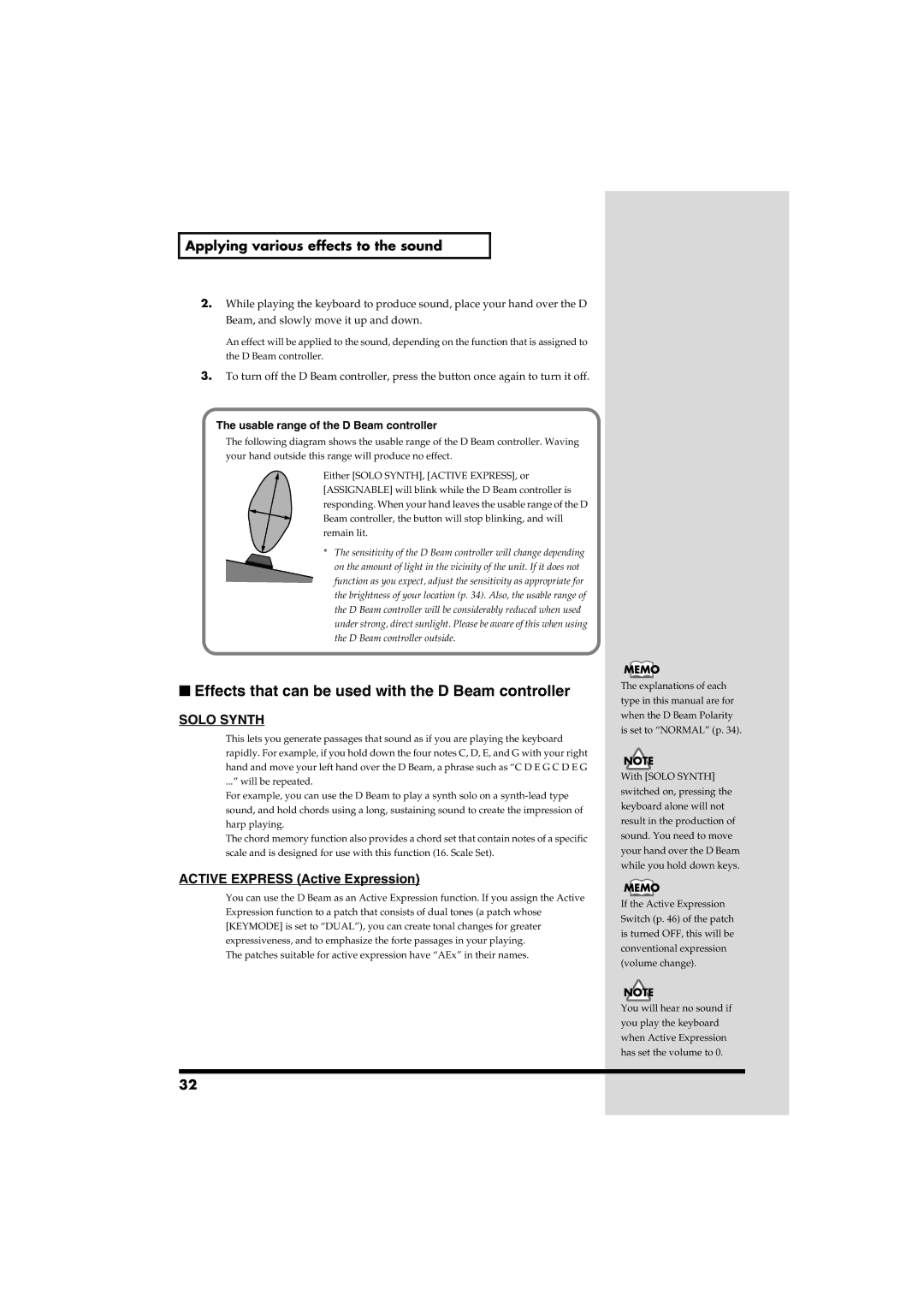
Applying various effects to the sound
2.While playing the keyboard to produce sound, place your hand over the D Beam, and slowly move it up and down.
An effect will be applied to the sound, depending on the function that is assigned to the D Beam controller.
3.To turn off the D Beam controller, press the button once again to turn it off.
The usable range of the D Beam controller
The following diagram shows the usable range of the D Beam controller. Waving your hand outside this range will produce no effect.
fig.q05-14
Either [SOLO SYNTH], [ACTIVE EXPRESS], or [ASSIGNABLE] will blink while the D Beam controller is responding. When your hand leaves the usable range of the D Beam controller, the button will stop blinking, and will remain lit.
* The sensitivity of the D Beam controller will change depending on the amount of light in the vicinity of the unit. If it does not function as you expect, adjust the sensitivity as appropriate for the brightness of your location (p. 34). Also, the usable range of the D Beam controller will be considerably reduced when used under strong, direct sunlight. Please be aware of this when using the D Beam controller outside.
■Effects that can be used with the D Beam controller
SOLO SYNTH
This lets you generate passages that sound as if you are playing the keyboard rapidly. For example, if you hold down the four notes C, D, E, and G with your right hand and move your left hand over the D Beam, a phrase such as “C D E G C D E G
...” will be repeated.
For example, you can use the D Beam to play a synth solo on a
The chord memory function also provides a chord set that contain notes of a specific scale and is designed for use with this function (16. Scale Set).
ACTIVE EXPRESS (Active Expression)
You can use the D Beam as an Active Expression function. If you assign the Active Expression function to a patch that consists of dual tones (a patch whose [KEYMODE] is set to “DUAL”), you can create tonal changes for greater expressiveness, and to emphasize the forte passages in your playing.
The patches suitable for active expression have “AEx” in their names.
The explanations of each type in this manual are for when the D Beam Polarity is set to “NORMAL” (p. 34).
With [SOLO SYNTH] switched on, pressing the keyboard alone will not result in the production of sound. You need to move your hand over the D Beam while you hold down keys.
If the Active Expression Switch (p. 46) of the patch is turned OFF, this will be conventional expression (volume change).
You will hear no sound if you play the keyboard when Active Expression has set the volume to 0.
32
